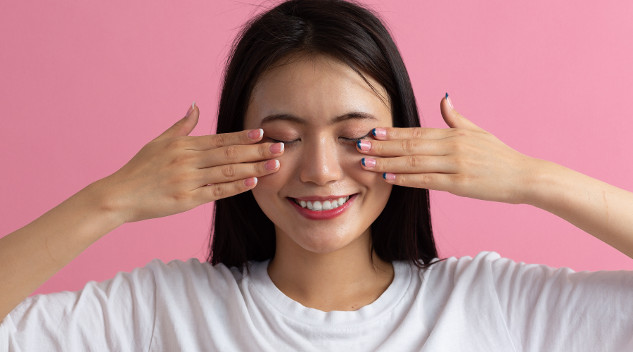
Article Summary:
Paul McCartney's practice of eye yoga has sparked interest in whether these exercises can reduce the need for glasses. Eye yoga, rooted in ancient practices, involves exercises that focus on eye movement and muscle strengthening. While these exercises may help with certain eye conditions and overall eye health, scientific evidence does not support the claim that they can replace glasses. Understanding how the eye functions and what causes the need for corrective lenses is crucial. Regular eye check-ups, a healthy lifestyle, and proper eye care are more reliable ways to maintain good vision.

Can Eye Exercises Replace Glasses?
Paul McCartney recently told The Times that he does eye yoga to avoid needing glasses. In the interview, he revealed that he was introduced to the eye exercises in India some years ago and has practised them ever since.
He believes that by exercising your eye muscles, you can reduce the need for glasses. Macca has demonstrated some of these techniques on YouTube.
So what is eye yoga and can exercising your eyes really prevent the need for glasses?
Different types of eye yoga have been practised for thousands of years. One example, tratak kriya, originating in India, is part of a yoga meditation practised in the belief that it develops higher states of consciousness and spiritual awakening. The Sanskrit word “tratak” means “fix your gaze” and involves staring at an object, such as a candle flame without blinking, until tears flow.
More recently, in the late 19th century, Dr William Bates, a New York ophthalmologist, published The Bates Method for Better Eyesight Without Glasses, in which he made the case that eye exercises could avert the need for glasses.
He believed that any glasses correction can be overcome by exercises involving eye movement and visualisation techniques, such as looking at an eye chart, focusing on letter contours, blinking frequently, closing the eyes to visualise the letter and imagining it blacker and sharper. The Bates eye exercises website still promotes his work today.
However, the premise of Bates’ theory, that the eye changes its shape during movement and focus, is physiologically untrue.
A 2018 study in the International Journal of Yoga compared visual acuity (the smallest letter that can be seen) and refractive error (a person’s glasses prescription) in groups who practised either Bates exercises or trakata yoga for eight weeks. The study concluded that neither exercise made any difference to refractive error or visual acuity.
The Bates method has been rejected by ophthalmologists, not only because of lack of evidence but because it’s potentially harmful, promoting “solarisation” (looking at the Sun), which is dangerous and overexposes the retina to sunlight.
To understand why eye yoga or Bates-theory exercises won’t correct your vision, it’s helpful to understand the eye and how we see.
Sir Paul explains his eye yoga routine.
Why we need glasses
The need for glasses arises when light rays are not focused on the retina. When the focus point occurs in front of the retina, this is myopia or short-sight. When the focus point is behind the retina, this is hypermetropia or long-sight.
Astigmatism occurs when the curvature of the front surface of the eye is more like a rugby ball than a sphere, causing blur at all distances. And presbyopia is a normal ageing process where the eye’s crystalline lens becomes stiffer and can’t focus as well on things close by, which is why most people need reading glasses by middle age.
Some of the eye’s focusing is achieved by the cornea (the front surface of the eye). But the responsive focusing structure is the crystalline lens, which becomes more bulbous or convex when focusing on close objects and flatter when focusing further away.
The size of the pupil and the convexity of the lens are controlled by ciliary muscles and ligaments inside the eye. In contrast, muscles involved in eye movement are on the outside of the eye (extraocular muscles).
While internal and external eye muscles work together to some degree – reading involves both convergence and focus – moving your eyes to different positions of gaze makes no difference to the shape or size of the eye or focus. So the mechanics of using eye exercises to change the refractive power do not add up.
Specific eye exercises are, however, often prescribed by orthoptists (experts who diagnose and treat defects in eye movement and problems with how the eyes work together) for certain conditions.
One example is “convergence insufficiency”, where people experience double vision close up because of difficulty moving their eyes inwards. Practising smooth pen convergence, where your eyes follow a pen moving slowly towards your nose, can help.
When adults too young for reading glasses struggle with near focus, this can be improved by focusing on a small letter or text, held and moved slowly towards the nose.
It’s also normal for adults to find looking far upwards increasingly difficult with age. We look up a lot as little children, meeting the gaze of adults around us. But eye muscles fatigue without practice, so unless you have a job or hobby that requires this, such as snooker, looking far upwards might become uncomfortable as you get older.
But while such exercises might help some aspects of vision, evidence is lacking to support any significant delay to presbyopia through exercises.
Understandably, people want to look after and improve their eyes and vision. Eye yoga won’t hurt your eyes, as long as you only do it for a couple of minutes and then relax the muscles by gazing into the distance afterwards. But other lifestyle changes might help your eyes more.
A regular optometrist appointment (usually every year for children and every two years for adults) to check your glasses prescription, eye pressure, and retinal and eye health ensures any early signs of diseases such as glaucoma can be detected and treated.
Taking regular breaks from screens helps reduce eye dryness. You could follow the 20:20:20 rule: every 20 minutes, take a 20-second break and look more than 20 feet away. Spending time outdoors is good for your eyes and children who spend time outside are less likely to become myopic.
Eat well. Some evidence suggests that Mediterranean diets and green leafy vegetables such as kale and spinach help prevent macular degeneration. A diet rich in omega 3 may help dry eyes. Sleep well and wear good quality sunglasses in sunlight.
If you suffer from dry eyes or use screens for long periods, meibomian gland massage could help you – a simple technique where a warm compress to the eyelid is followed by gentle downwards eyelid massage, to coax the oil produced in the eyelids towards the eye surface, making it more comfortable. Read in good light and, if possible, read large volumes of text on a computer rather than a phone.
Eye yoga won’t change or eliminate your need for glasses, but there are other ways to take care of your eyes and vision.![]()
Charlotte Codina, Lecturer, Orthoptics, University of Sheffield
Conclusion:
Eye yoga, while beneficial for eye health and certain conditions, cannot replace the need for glasses. Understanding the mechanics of vision and the importance of regular eye check-ups, alongside a healthy lifestyle, are essential for maintaining optimal eye health. Incorporate eye exercises as a supplementary routine, but rely on proven methods for vision correction and eye care.
This article is republished from The Conversation under a Creative Commons license. Read the original article.
Related Books:
The Body Keeps the Score: Brain Mind and Body in the Healing of Trauma
by Bessel van der Kolk
This book explores the connections between trauma and physical and mental health, offering insights and strategies for healing and recovery.
Click for more info or to order
Breath: The New Science of a Lost Art
by James Nestor
This book explores the science and practice of breathing, offering insights and techniques for improving physical and mental health.
Click for more info or to order
The Plant Paradox: The Hidden Dangers in "Healthy" Foods That Cause Disease and Weight Gain
by Steven R. Gundry
This book explores the links between diet, health, and disease, offering insights and strategies for improving overall health and wellness.
Click for more info or to order
The Immunity Code: The New Paradigm for Real Health and Radical Anti-Aging
by Joel Greene
This book offers a new perspective on health and immunity, drawing on principles of epigenetics and offering insights and strategies for optimizing health and aging.
Click for more info or to order
The Complete Guide to Fasting: Heal Your Body Through Intermittent, Alternate-Day, and Extended Fasting
by Dr. Jason Fung and Jimmy Moore
This book explores the science and practice of fasting offering insights and strategies for improving overall health and wellness.
























